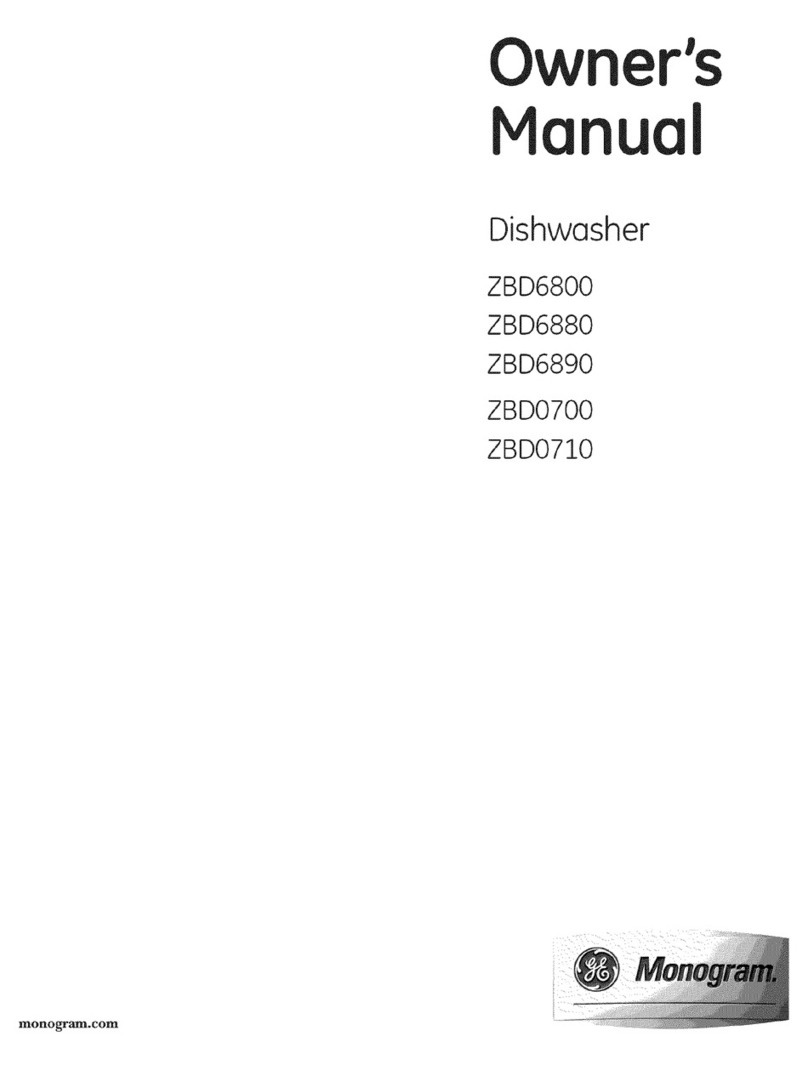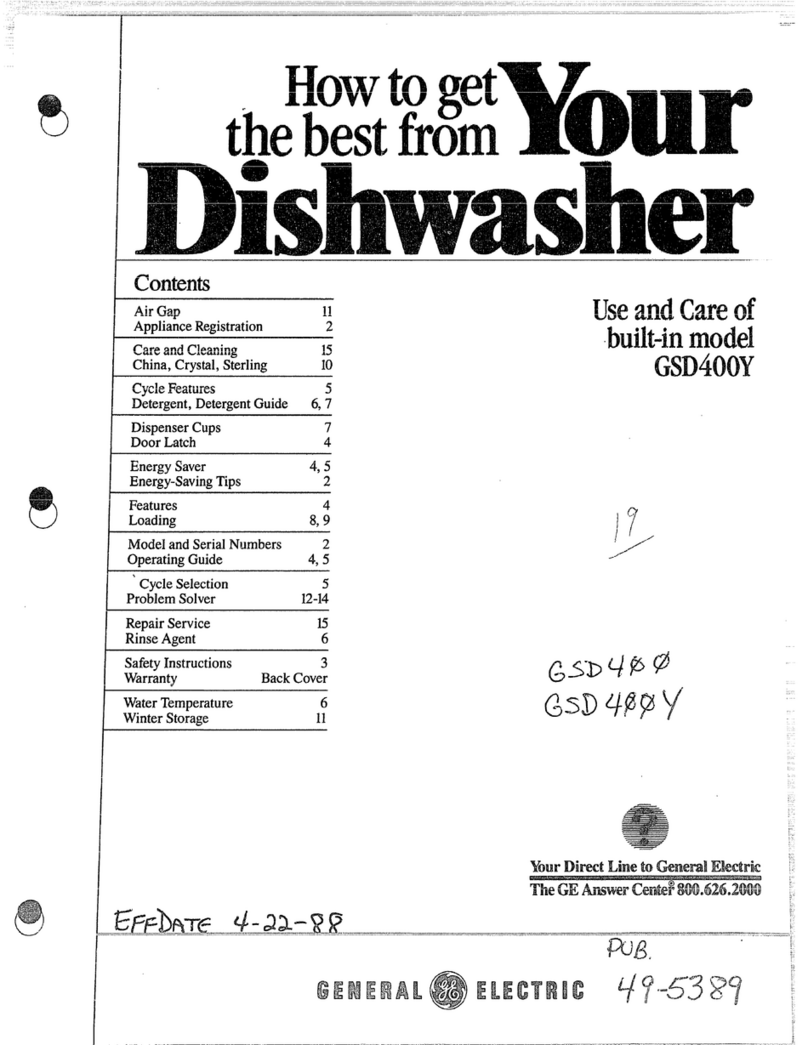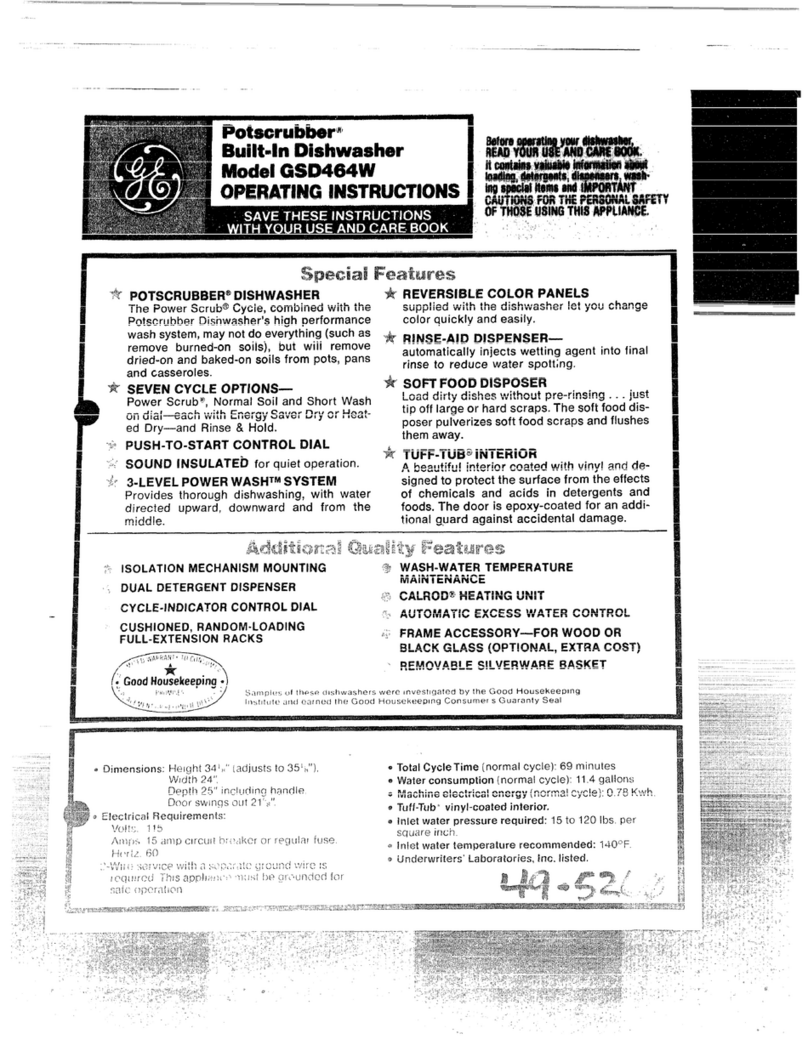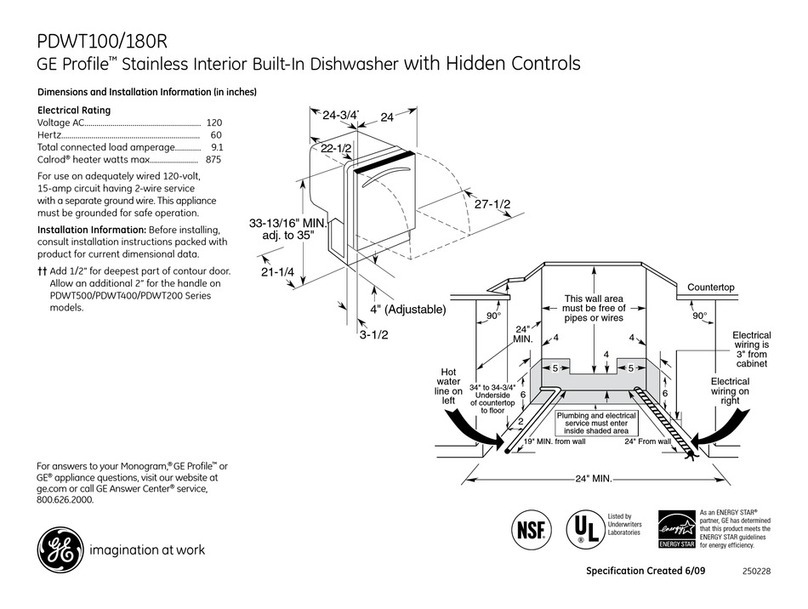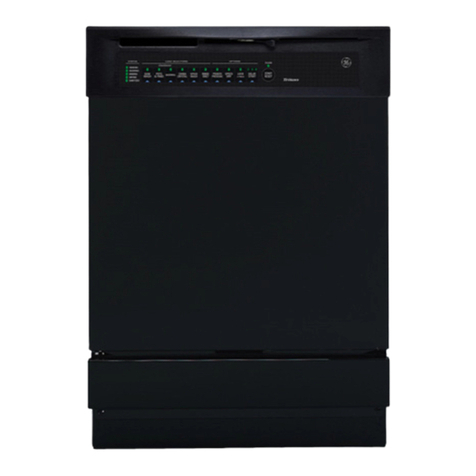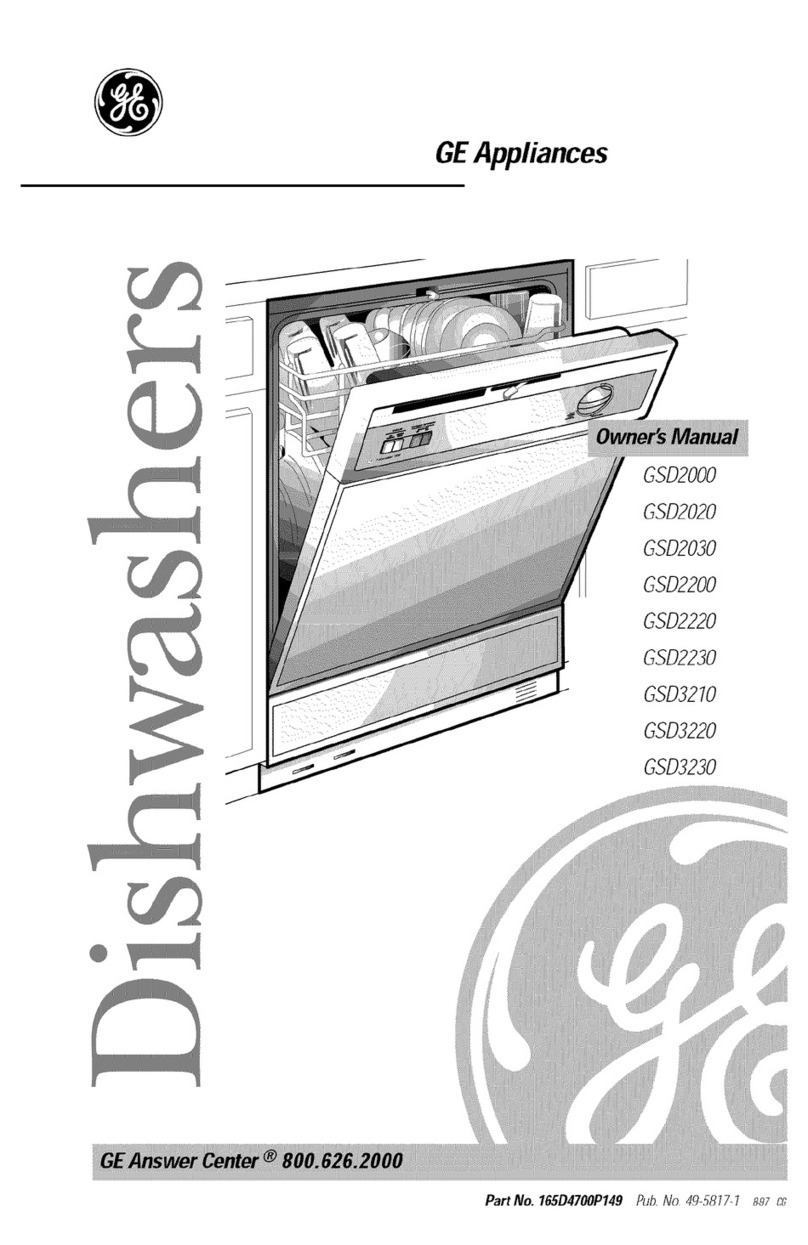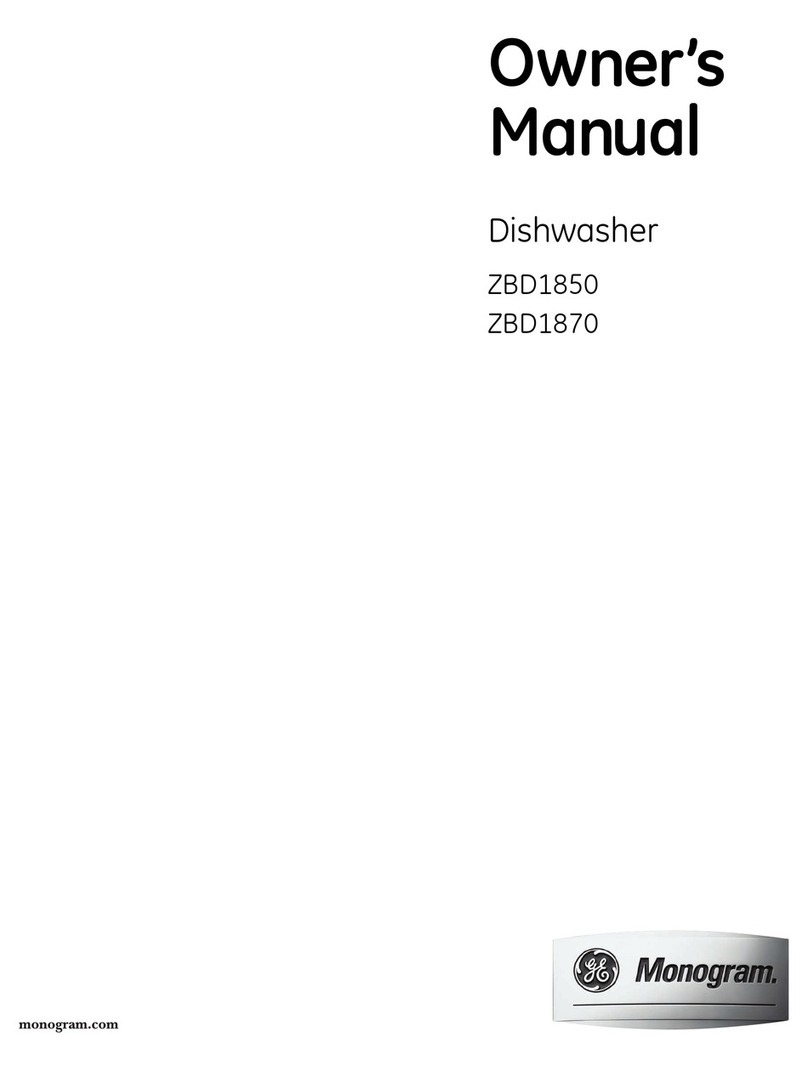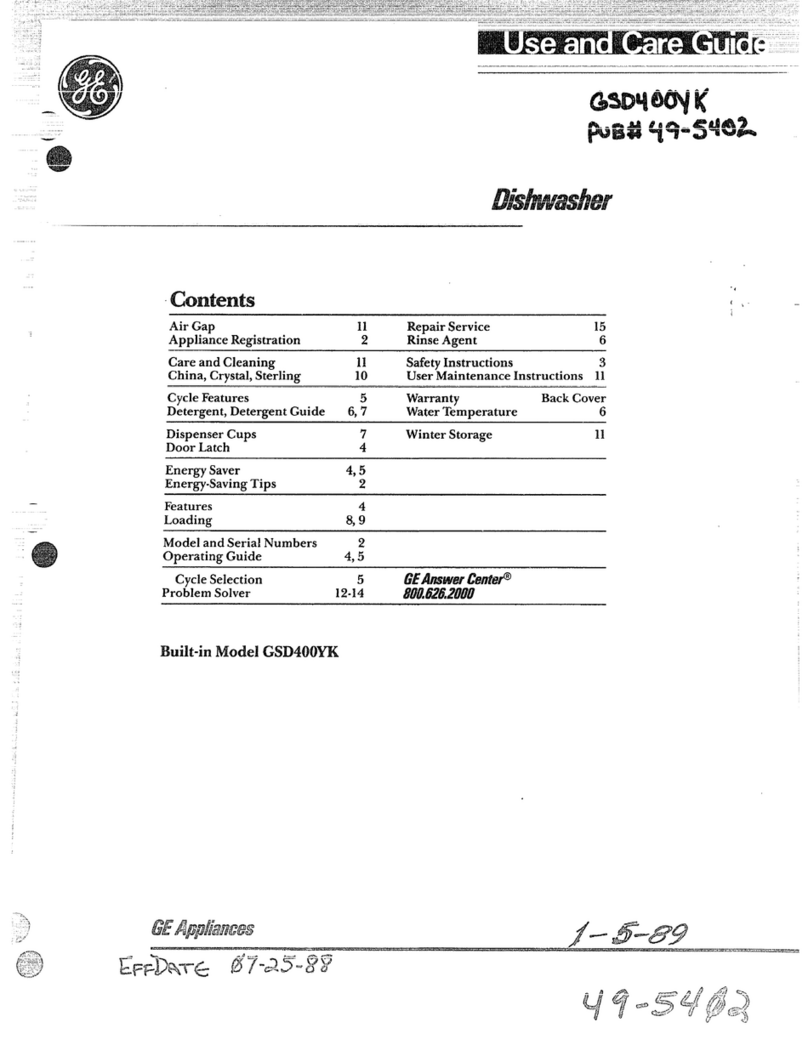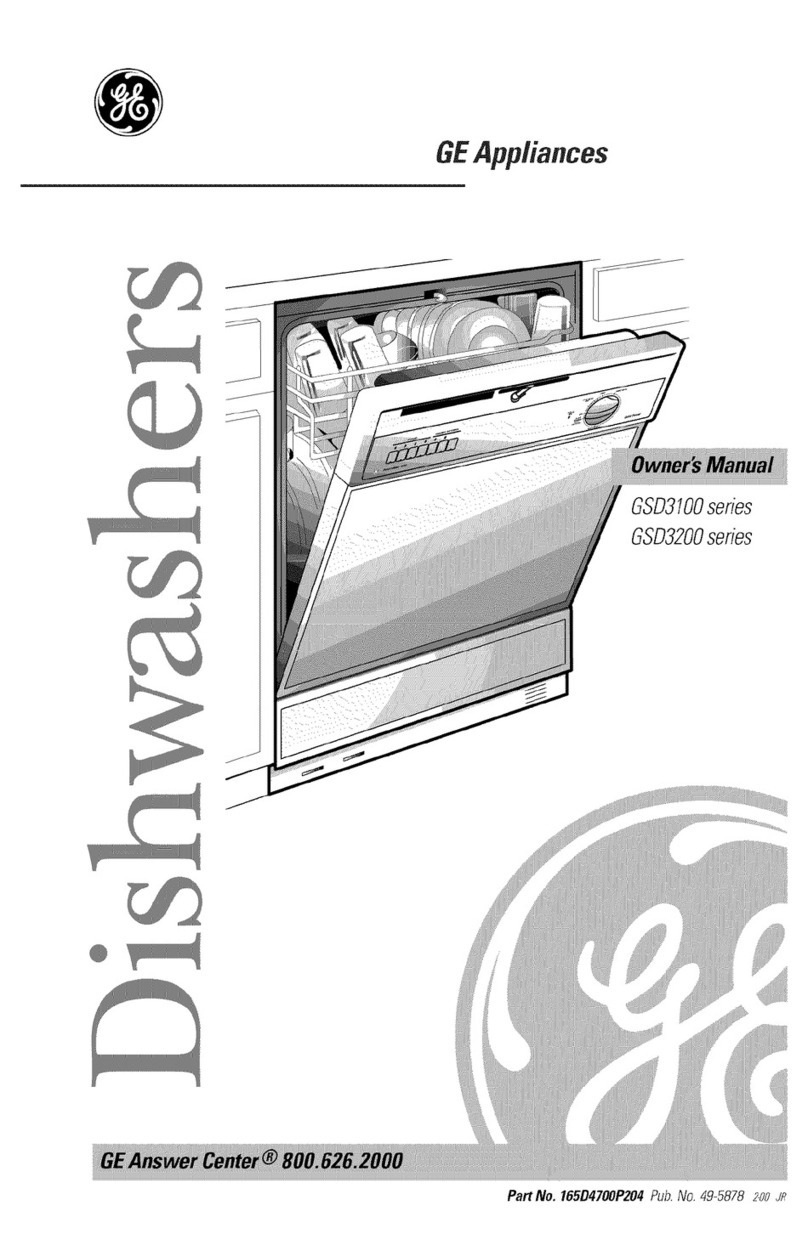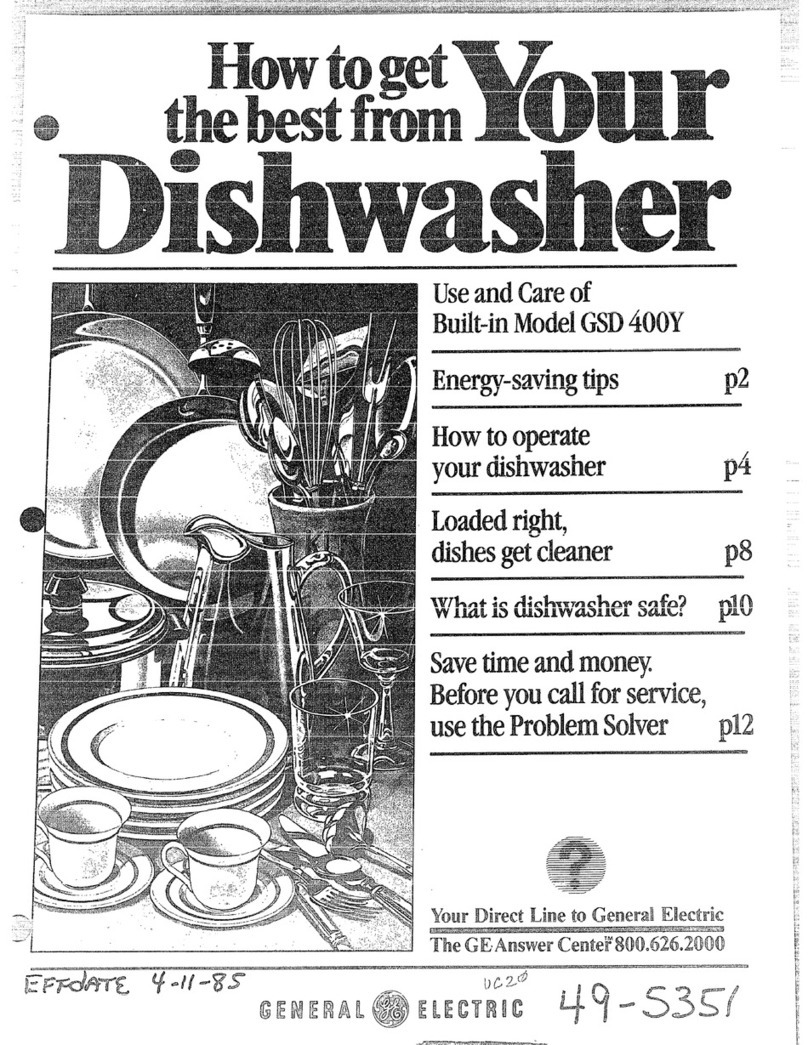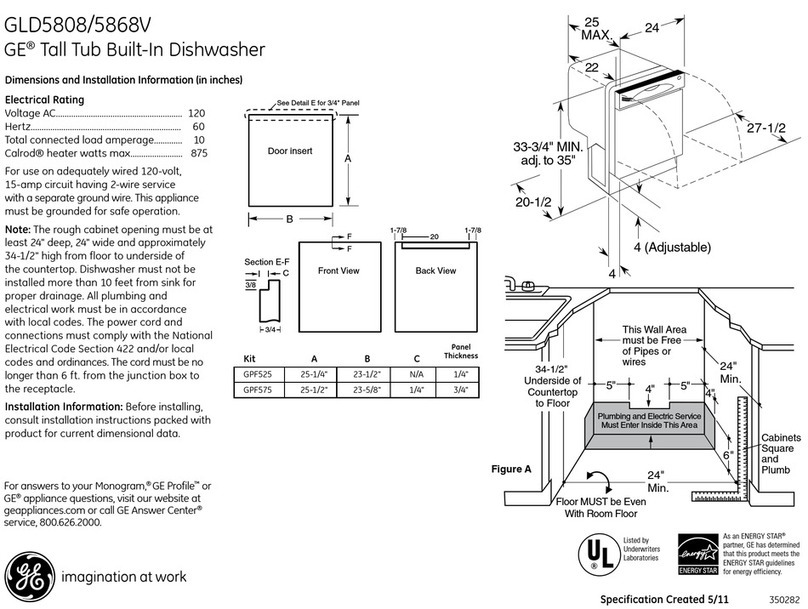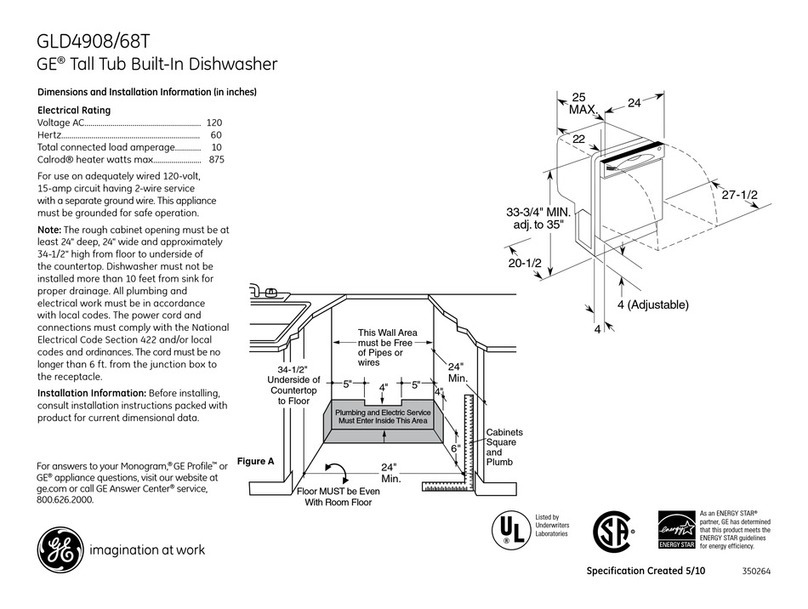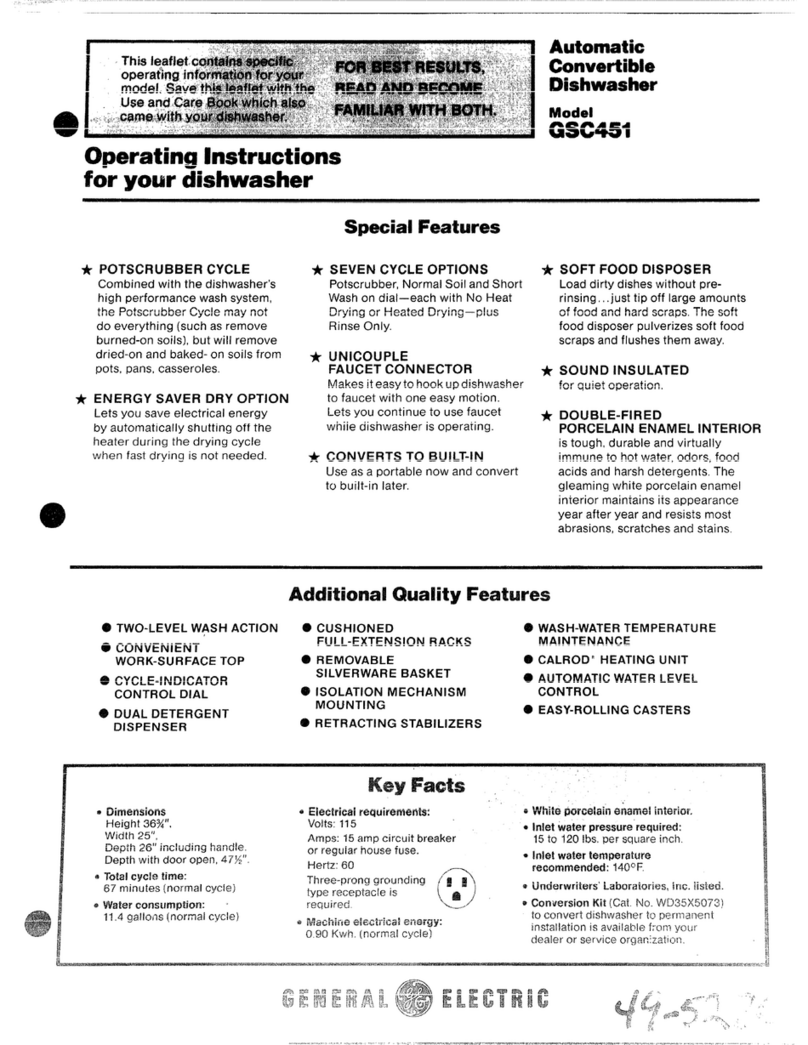What can youwash safely .....15 ‘
Careofyourdishw’ksher .......16 ~
Problemsolving ..........17-19 :
Consumerservices ..........21
“Warranty...........BackCover
Help us
help you...
Read this book carefully
It is designed to help you operate
and maintain your new dishwasher
properly.
Keep it handy for answers to your
questions.
If you don’t understand something
or need more help... Call, toll free:
The GE Answer CenterTM
800.626.2000
consumer information service
or write (include your phone
number]
Consumer Affairs
General Electric Company
Appliance Park
Louisville, KY 40225
Write down the model and
serial numbers.
You’ll find them on a label on the
left side of the dishwasher just
inside the door.
These numbers are also on the
Consumer Product Ownership
Registration card that came with
your dishwasher. Before sending in
this card, please write these
numbers here:
Model No.
Serial No.
Use these numbers in any
correspondence or service calls
concerning your dishwasher.
If you receive adamaged
dishwasher, immediately contact
the dealer (or builder) that sold you
the dishwasher.
Save time and money...
before you call for service
Check the Problem Solver (pages c:
17-19).It lists minor causes of
operating problems that you can
correct yourself. It could save you
an unnecessary service call.
Convenience Features
This is avery advanced, automatic
and versatile dishwasher. It’s very
easy to understand and use, but it
is different. Before using your
dishwasher the first time, read and
follow these instructions.
This dishwasher has many con-
venient features. Among them are:
.Controls are arranged left to
right as you use them.
.Automatic responses to instruc-
tions let you know the desired
function has been selected.
cLets you select fast, heated
drying or energy-saving no-heat
drying.
.ASYSTEMS MONITOR that tells
you what’s happening in the
dishwasher and if something’s
wrong.
.Lets you LOCK the controls to
prevent accidental tampering.
.Remembers your last cycle so
you don’t have to re-program each
time. See SHORTCUT on page 4.


